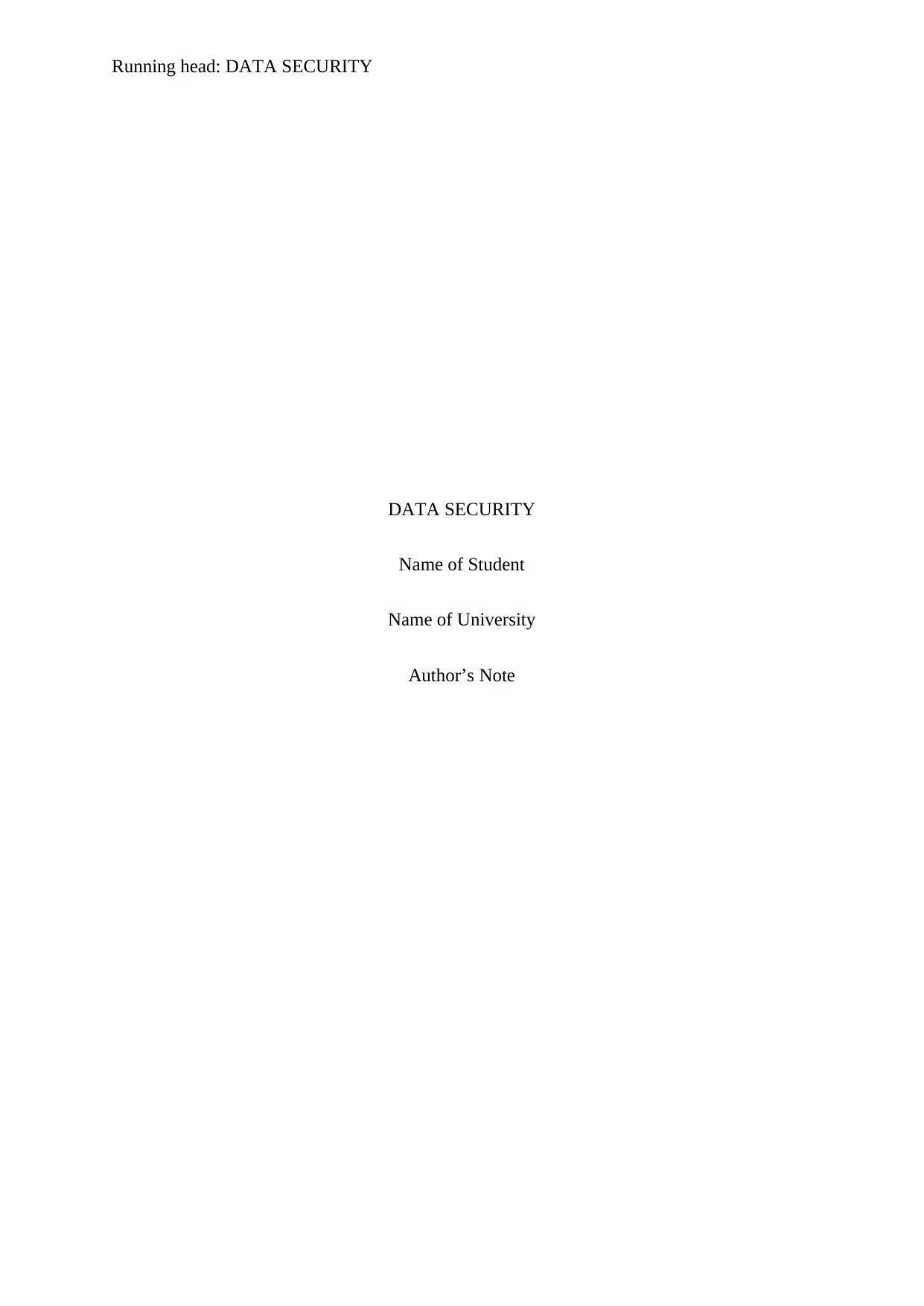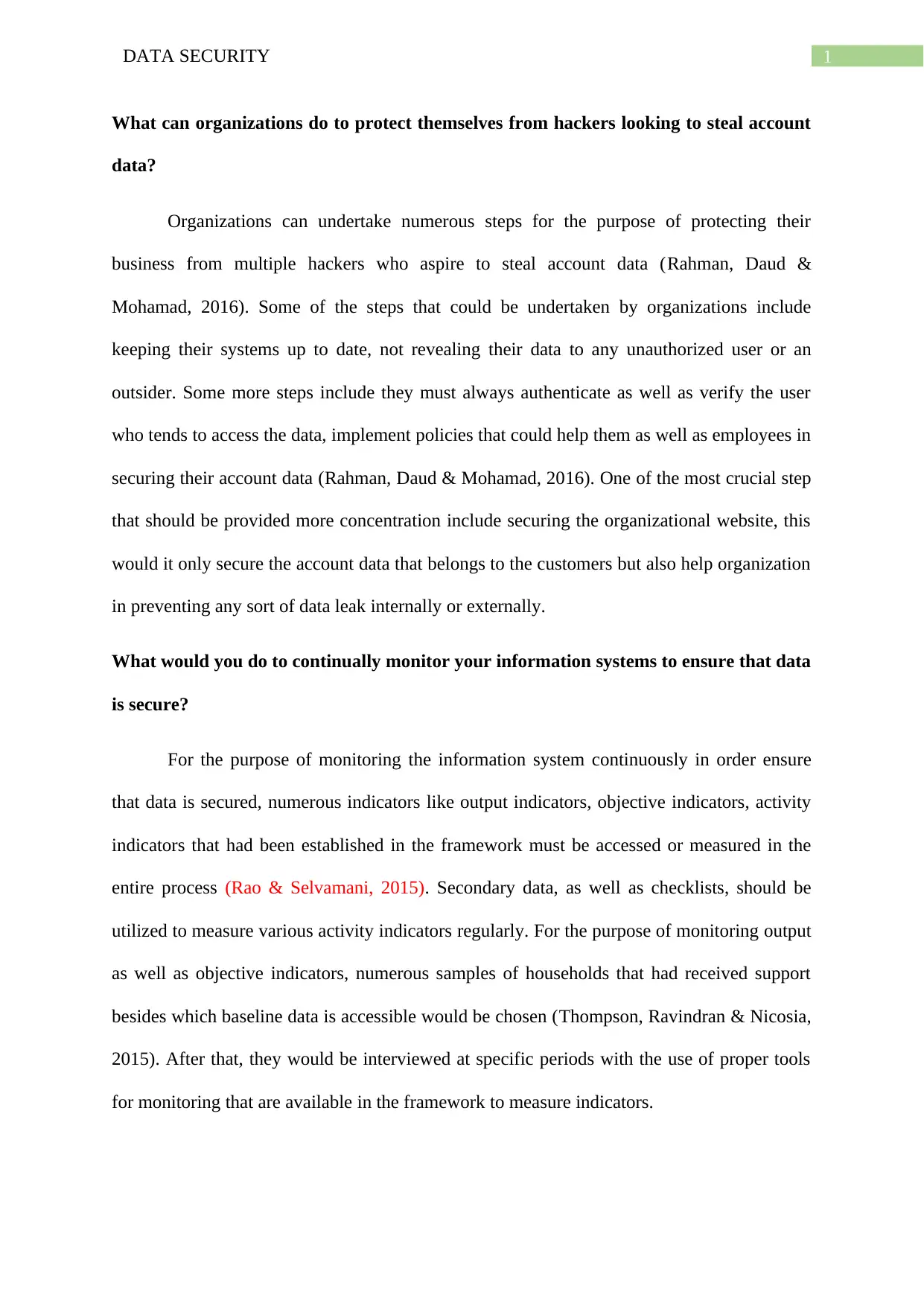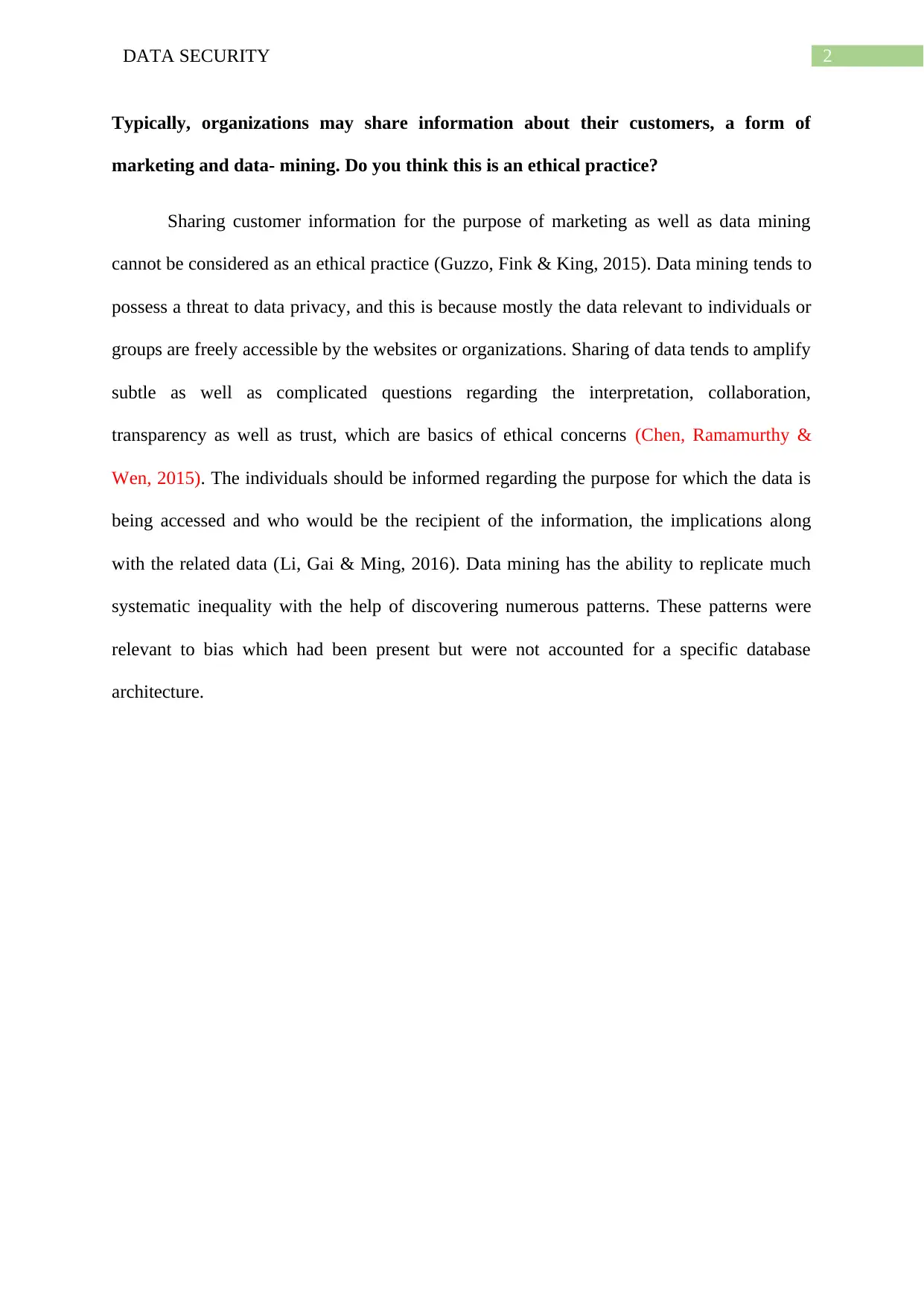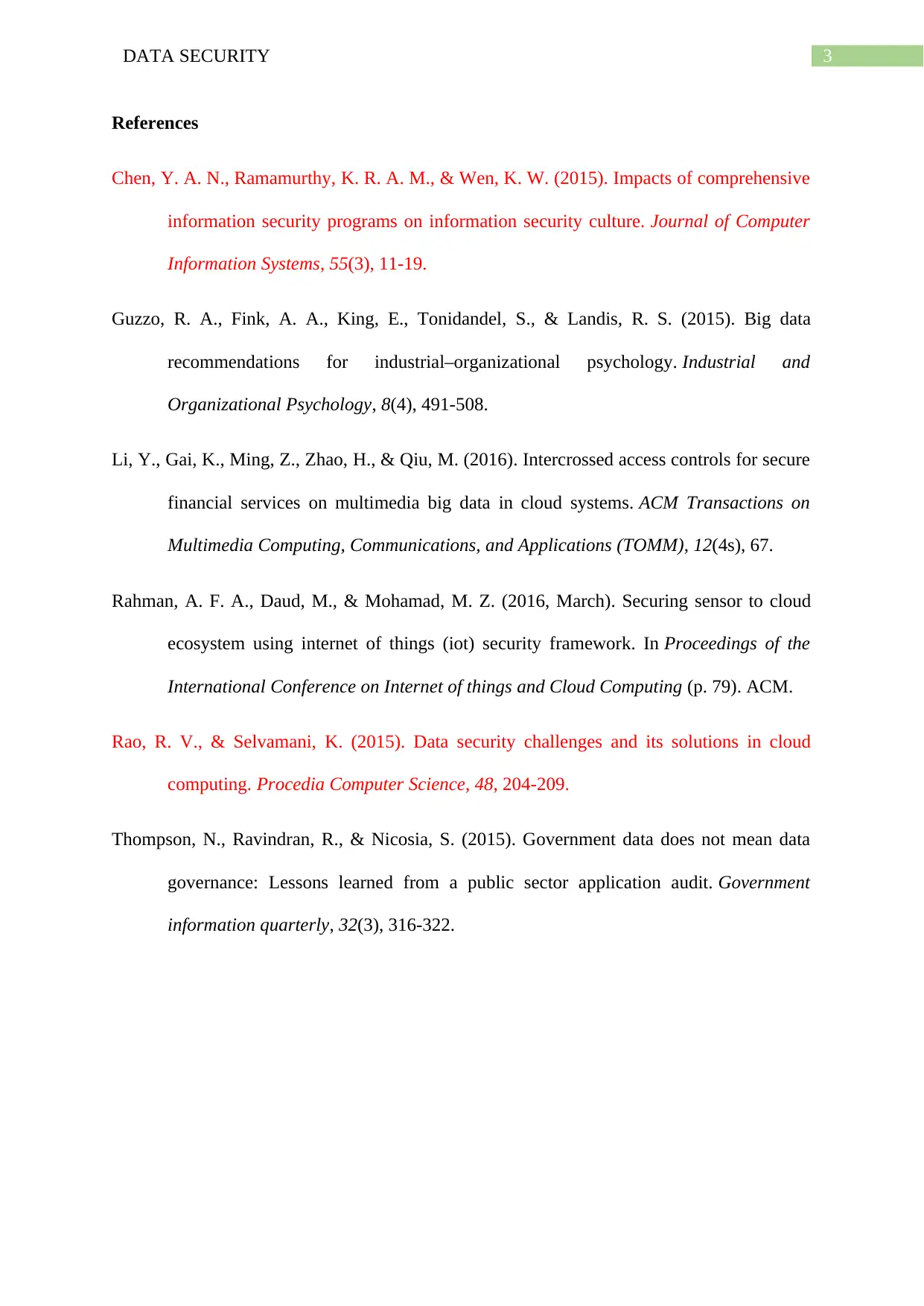Data Security Assignment: Protecting Data and Ethical Concerns
VerifiedAdded on 2022/11/16
|4
|842
|267
Homework Assignment
AI Summary
This assignment delves into crucial aspects of data security, beginning with the proactive measures organizations can implement to safeguard against data breaches and the theft of account data. It emphasizes the importance of system updates, user authentication, and the implementation of robust security policies. The assignment then transitions to the continuous monitoring of information systems, outlining various indicators and methodologies to ensure data security, including the utilization of secondary data and checklists. Furthermore, the assignment critically examines the ethical implications of sharing customer information for marketing and data mining purposes, highlighting concerns about data privacy, transparency, and potential biases inherent in data mining practices. The student emphasizes the necessity of informed consent and the potential for data mining to perpetuate inequalities, providing a comprehensive overview of data security challenges and ethical considerations.
1 out of 4









![[object Object]](/_next/static/media/star-bottom.7253800d.svg)